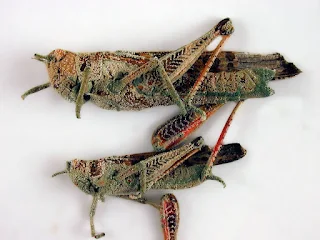Microbial Biocontrol Agents
In
modern agriculture, the significance of sustainable practices cannot be
overstated. Among these practices, using Microbial Biocontrol Agents stands out
as a promising solution. Let's explore why these tiny warriors are gaining
recognition and reshaping the agricultural landscape.
Introduction
Microbial
biocontrol agents, also known as biological control agents, are naturally
occurring microorganisms that can suppress pests and diseases. Unlike chemical
pesticides, which can adversely affect the environment and human health,
microbial biocontrol agents offer a safer and more sustainable alternative.
Benefits
of Microbial Biocontrol Agents
Enhancing the Health of the Soil
A successful agricultural industry is built on healthy soil.
Microbial biocontrol agents are essential for preserving the health of soil
because they enhance soil structure and biodiversity. Mycorrhizal fungi, for
example, are beneficial microorganisms that build symbiotic partnerships with
plants to improve nutrient uptake and root development. As a result, the plants
become healthier and more resilient to environmental stressors and pest
pressure.
Improving Crop Safety
A major role of microbial biocontrol agents is to keep pests
and illnesses away from crops. It has been determined that several bacteria,
viruses, and fungi can inhibit harmful species through parasitism, resource
competition, and the synthesis of antimicrobial chemicals. Farmers can
successfully control insect populations and lessen their dependency on chemical
pesticides by utilizing these advantageous bacteria.
Endorsing Ecological Agriculture Methods
Microbial biocontrol agents provide a natural and
environmentally sound solution for pest management in an era where sustainable
farming practices are becoming more and more important. Growers can reduce
environmental pollution, preserve natural resources, and enhance ecosystem
resilience by incorporating these biological control agents into their farming
operations. Additionally, using microbial biocontrol agents improves the
product's marketability and profitability for farmers by complying with
consumer demands for pesticide-free produce.
Types of Microbial Biocontrol Agents
Fungi: The capacity of certain fungi, like Trichoderma spp., Metarhizium spp.,
and Beauveria bassiana, to parasitize insect pests or produce toxins toxic to
diseases, makes them popular biocontrol agents. These fungi can be used as
foliar sprays or soil supplements to combat a variety of pests, such as
insects, nematodes, and fungal diseases.
Bacteria: Beneficial bacteria, such as Bacillus thuringiensis (Bt), are useful
tools for insect control in agriculture because they produce insecticidal
proteins that target certain insect pests. Additionally, through processes like
nutrient solubilization and the generation of systemic resistance,
rhizobacteria like Pseudomonas and Bacillus species support plant growth and
decrease disease.
Viruses: While fungi and bacteria are used more frequently, several viruses have
been investigated as possible biocontrol agents for insect pests. Certain
viruses, such as granulovirus (GV) and nucleopolyhedrovirus (NPV), are unique
to particular insect species and can be combined to create biopesticides that
are intended to target specific pests.
Application Methods
Soil Treatment: Through techniques like composted material inclusion or seed
inoculation, microbial biocontrol agents can be introduced into the soil to
create populations of beneficial microorganisms that will withstand soil-borne
pathogens and pests for an extended period.
Foliar Spray: Targeted management of pests and illnesses that grow above
ground is possible with the application of microbial biocontrol agents such as
foliar sprays. Applying the sprays during times of low wind and ideal weather
is crucial to maximizing effectiveness and reducing off-target impacts.
Seed Treatment: Treating seeds with microbial biocontrol agents before
planting ensures the early establishment of beneficial microbes in the
rhizosphere, providing protection against soil-borne pathogens and promoting
seedling vigor. Seed treatments can be applied using seed coatings or soaking
methods.
Challenges and Future Outlook
Resistance: One of the main challenges facing microbial biocontrol
agents is the development of resistance in target pests. To mitigate
resistance, researchers are exploring new formulations, delivery methods, and
combinations of biocontrol agents.
Regulation: The regulatory approval process for microbial biocontrol
agents can be lengthy and complex, hindering their widespread adoption.
Streamlining regulations and providing incentives for sustainable practices
could accelerate their integration into agricultural systems.
Advancements: Despite challenges, ongoing research and technological
advancements are driving innovation in microbial biocontrol. From genomics and
synthetic biology to precision agriculture and digital tools, the future looks
promising for bio-based solutions.
Case Studies
Successful Applications: Numerous case studies demonstrate the efficacy of
microbial biocontrol agents in real-world agricultural settings. From reducing
pesticide residues in food to improving crop yields and soil health, these
success stories highlight the potential of biological control.
Lessons Learned: By studying successful applications and failures,
researchers and practitioners can learn valuable lessons about the factors
influencing the efficacy and scalability of microbial biocontrol agents.
Collaboration and knowledge-sharing are essential for advancing sustainable
agriculture.
In conclusion, microbial biocontrol agents offer a potent and
sustainable solution for pest and disease management in agriculture. Their
benefits extend beyond crop protection to encompass environmental
sustainability, food safety, and human health. Despite challenges, the future
looks bright for harnessing the power of microorganisms to transform
agriculture.
FAQs
1. What are some examples of microbial biocontrol agents?
Examples include Bacillus
thuringiensis (Bt), Beauveria bassiana, and entomopathogenic viruses like
nucleopolyhedrovirus (NPV).
2. Are microbial biocontrol agents safe for humans and the
environment?
Yes, microbial biocontrol agents are
generally safe when used according to label instructions. They have minimal
impact on non-target organisms and ecosystems.
3. How do microbial biocontrol agents differ from chemical
pesticides?
Microbial biocontrol agents are
living organisms that target specific pests, whereas chemical pesticides are
synthetic chemicals that kill a wide range of organisms, including beneficial
insects and microbes.
4. What challenges do microbial biocontrol agents face in
agriculture?
Challenges include resistance in
target pests, regulatory hurdles, and the need for further research to optimize
efficacy and delivery methods.
5. How can farmers integrate microbial biocontrol agents into
their practices?
Farmers can integrate microbial
biocontrol agents into their pest management programs by following integrated
pest management (IPM) principles, conducting site-specific assessments, and
using compatible cultural and biological control methods.



.jpg)